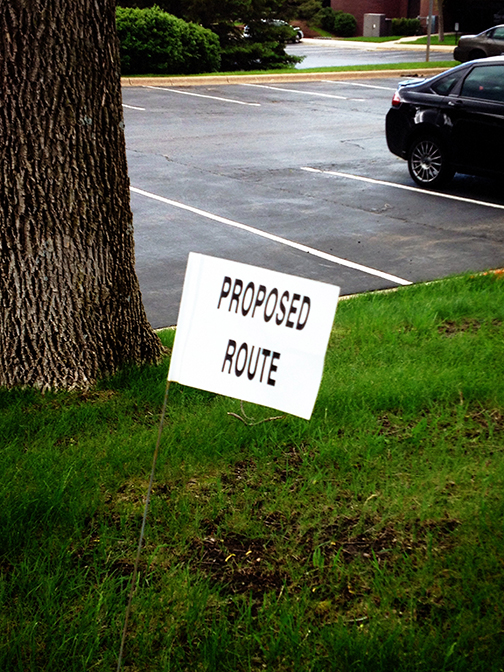After providing the general location (address and/or corresponding driving directions) of a proposed excavation site to Gopher State One Call (GSOC), you must provide specific details about the area you need marked. Use the marking instructions section of the ticket to enter detailed information to allow the facility operator to fully understand your job site. Think ahead about how to best describe any specific needs or situations that a facility operator or locator may need to know.
When identifying this area, keep these “do’s and don’ts” regarding marking instruction guidelines in mind1:
- DO provide specific measurements of the proposed excavation site. An example of an effective marking instruction is:
- Work keeping within (###) (feet, meters, yards, miles) of (pre-marking: flag, paint, lath, etc.)
DON’T default to “mark entire lot” unless your work is so extensive in nature that it is taking place throughout the whole property. - DO use cardinal directions or property orientation such as North, South, East, and West, or front, back, side(s), inside/ outside fence, etc. when providing marking instructions.

DON’T use relative directions such left or right when describing the excavation area. - DO include notes about additional obstacles such as a dog onsite, locked gates, guard/restricted access, hazards, etc.

DON’T forget to include additional details that may restrict locator access. - DO include location hints for the proposed excavation area, such as TRSQ (a digital data set that represents the township, range, section, quarter section, and quarter-quarter section divisions of the state), GPS coordinates, landmarks, etc.

DON’T be vague about the proposed excavation location. The more details you provide, the more accurate your locate will be. - DO make sure to white line the proposed excavation area to better communicate the full scope of your work and reduce the possibility of delayed locates or potential errors. Remember, Minnesota law requires you to use white markings for proposed excavations, except where it can be shown it’s not practical.

DON’T assume that your marking instructions are enough to describe the proposed excavation area. Always white line where you plan to excavate to better communicate the full extent of your project plan.
Of course, always file a locate request with GSOC at least 48 hours, excluding weekends and holidays, before breaking ground! With these tips in mind, you are on track to have a successful and safe excavation.
Source1: GSOC Handbook
